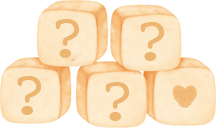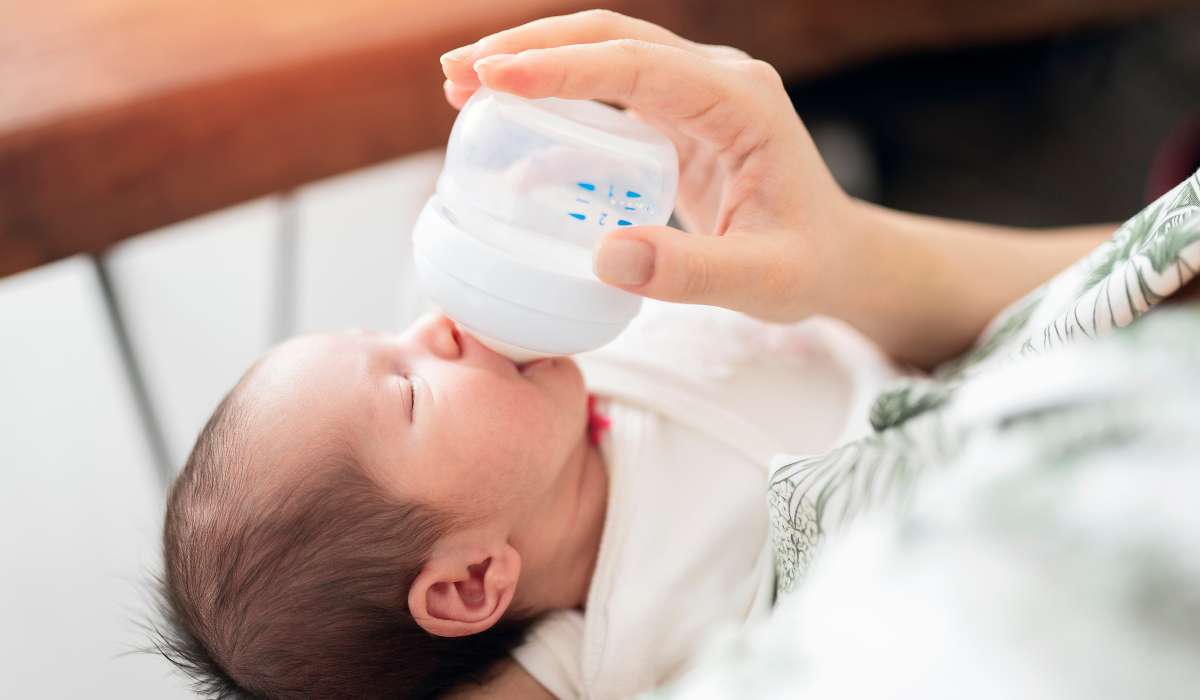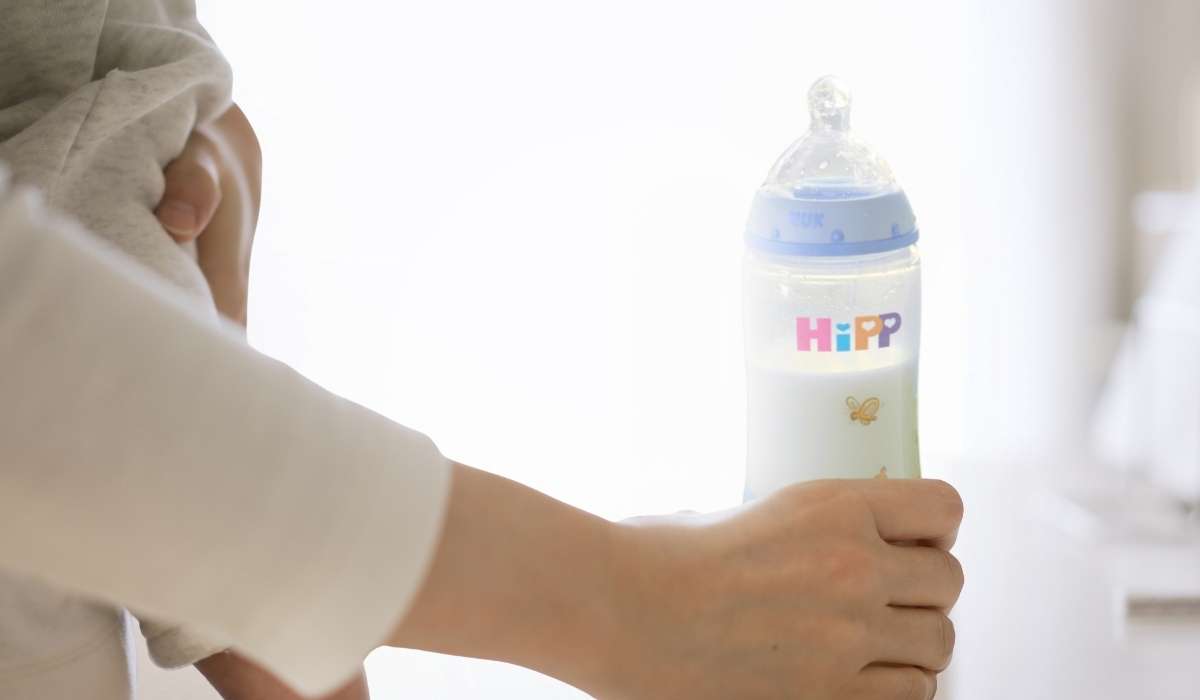Proper formula preparation is crucial in ensuring your baby's nutrition because it directly affects their growth, development, and overall health. Although, it's not always straightforward because the instructions can differ based on the specific formula.
This can leave you asking yourself: how much is a scoop of formula? How many ounces or scoops of formula does my baby need? And how do I measure baby formula?
Not to worry! We are here to answer these questions, and more, since accurately measuring your baby's formula is an integral part of the formula feeding process. It ensures consistency, maintains nutritional balance, and prevents overfeeding or underfeeding.
Keep reading for guidance on accurately measuring European baby formulas, as we understand that the slight variations in baby formula products can be confusing.
Contents
- Official Recommendations for Formula Preparation
- European Baby Formulas: Holle, HiPP, Kendamil, Jovie, Nannycare, and Lebenswert Bio
- Common Mistakes and How to Avoid Them
- Tips for Perfect Formula Preparation Every Time
- Measuring formula with a Kitchen Scale
- Frequently Asked Questions About Formula Measurements
Official Recommendations for Formula Preparation
The first step of this process is reading over the manufacturer's instructions when preparing formula for your baby. These instructions provide specific guidelines on the correct water-to-formula ratio, number of formula scoops, preparation techniques, and measurements.
Here are two essential aspects to consider:
#1 Importance of following manufacturer's instructions: The manufacturer's instructions are designed to ensure proper nutrition and safety for your baby. They provide information on the appropriate amount of formula powder to use, water temperature, mixing instructions, and storage guidelines. Following these instructions diligently helps maintain the nutritional balance and minimize the risk of overfeeding or underfeeding.
#2 Differences in scoop sizes and measurements across brands: It's essential to be aware that different formula brands may have variations in their formula scoops. Each brand provides its own designated scoop, precisely calibrated to measure the correct amount of formula powder for their product.
It is crucial not to interchange scoops between different brands, as this can lead to inaccurate measurements and affect the nutritional content of the prepared formula. Instead, always use the formula scoop provided and don't measure baby formula without it.
European Baby Formulas: Holle, HiPP, Kendamil, Jovie, Nannycare, and Lebenswert Bio
Popular European baby formula brands like Holle, HiPP, Kendamil, Jovie, Nannycare, and Lebenswert Bio have gained popularity for their commitment to high-quality ingredients and nutritional standards.
These brands offer a range of formula options to cater to different dietary needs and preferences, including organic European baby formula powder, goat milk-based formula, and special formulas.
Not only can the formula measurements vary between each formula brand, but how much a scoop holds can also vary between products and stages. A slightly different measurement may not seem like a big deal, but using the proper scoop and following guidelines is vital for your baby's health.
Let's look at general guidelines from each brand, but make sure to refer to your specific product for instructions on how many scoops to use when preparing the formula.
Holle
Holle formula products often include a spoon that corresponds to a weight of approximately 4.4 g (or 0.155 oz). However, it's important to note that the number of scoops required can vary depending on the age and weight of the baby.
HiPP
Importantly, the scoop sizes of HiPP formulas can vary significantly between products. For instance, their HA formulas are 4.6 g (for Stage 1) and 4.7 g (for Stage 2) per scoop. HiPP Kindermilch Stage 1+ has a 5.4 g scoop and their Anti Reflux formula has a 4.3 g scoop. Generally speaking, each level scoop of HiPP formula typically contains approximately 4.4 g- 4.5 g of formula powder.
When preparing HiPP formula, it is recommended to use one flattened spoonful of formula for every 30 ml (or 1.01 oz) of water. How many scoops are required can vary depending on the age and weight of the baby.
Kendamil
Kendamil recommends adding 1 level scoop of formula powder to each 30 ml of water (freshly boiled and cooled). One level scoop of formula is equal to 4.3 g. The number of scoops required can vary depending on the age and weight of the baby.
Jovie
One level scoop of formula from Jovie contains 4.3 g of milk powder. The number serving size of scoops required can vary depending on the age and weight of the baby.
Nannycare
One level scoop of Nannycare formula contains 4.3 g of milk powder. The number of scoops required can vary depending on the age and weight of the baby.
Lebenswert Bio
Lebenswert Bio formula provides 4.4 g of milk powder in one level scoop. However, it's important to note that the number of scoops needed may vary depending on the age and weight of the baby.
Common Mistakes and How to Avoid Them
Preparing formula for your baby requires attention to detail. However, it's easy to make mistakes that can impact the nutritional balance and concentration of the formula.
Let's address some of the most common errors:
1. Overpacking or underpacking the scoop: One common mistake is not measuring the correct amount of powder, resulting in an imbalanced formula concentration. Overpacking the scoop can lead to a concentrated mixture, while underpacking can result in diluted formula.
2. Using the wrong scoop for the formula: Different formula brands may provide different measuring spoon scoops. Using a scoop from one brand with another brand's formula can lead to inaccurate measurements and affect the nutritional balance of the prepared formula.
3. Not levelling off the scoop: Failing to level off the scoop when measuring can result in too much or too little formula powder, leading to inconsistencies in the formula's concentration and nutrient content.
Solutions for avoiding these errors:
1. Read the instructions carefully: Follow the manufacturer's instructions on the formula packaging to determine the correct scoop size and measurement.
2. Use the provided scoop: Always use the scoop that comes with your formula. Each scoop is specifically designed to measure the appropriate amount of formula powder for that brand.
3. Measure accurately: Use a level scoop to measure the formula powder accurately.
4. Seek professional guidance: If you have any doubts or concerns about measuring the formula correctly, consult your pediatrician or a healthcare professional. They can provide specific instructions and address any questions or issues you may have.
By following these solutions and being attentive to the instructions, you can avoid common mistakes when preparing formula, ensuring accurate measurements and proper nutrition for your little one.
Tips for Perfect Formula Preparation Every Time
We want to take the guessing game out of formula preparation, so here are tips for perfect formula preparation every time:
The importance of a clean and dry scoop
Before each use, ensure that the formula scoop is clean and dry. Any moisture or residue on the scoop can affect the accuracy of measurements and introduce contaminants. Wash and dry the scoop thoroughly after each use, or use a designated clean scoop for each preparation.
Techniques for levelling off the scoop
To achieve accurate measurements, levelling off the scoop properly is crucial. Use a clean, straight edge (such as a knife or the leveller provided on the formula container) to remove excess powder from the scoop's top, creating a level and even surface. This ensures that you add the precise amount of formula powder as intended.
Tools and gadgets for precise formula measurements
Consider using specialized tools or gadgets to achieve precise formula measurements. Some formula containers have built-in levellers or measurement guides for accurate scooping. Additionally, you can use a digital kitchen scale to weigh the formula powder if you prefer a more precise measurement method.
How to properly mix the formula to ensure an even distribution of nutrients:
Follow these steps for thorough mixing:
- Add the recommended amount of water to the bottle.
- Add the measured formula powder according to the instructions.
- Seal the bottle tightly with the cap and ensure the nipple is securely attached.
- Shake the bottle vigorously for about 10-15 seconds to ensure thorough mixing. The shaking action helps distribute the formula powder evenly throughout the water, achieving consistent nutrient distribution.
Measuring formula with a Kitchen Scale
Using a kitchen scale for measuring formula offers several advantages and can help ensure accurate and consistent measurements.
Here are the benefits of using a kitchen scale:
Precision: A kitchen scale provides precise measurements in grams per scoop, allowing for more accurate formula preparation. This ensures that the recommended ratios of powder to water are maintained, resulting in consistent nutrition for your baby.
Flexibility and Adaptability: Different formula brands may have varying scoop sizes or densities, making it challenging to achieve consistent measurements with scoops alone. With a kitchen scale, you can easily convert scoop measurements to grams, allowing for consistent weighing across different formula brands.
Elimination of Guesswork: Measuring formula with a kitchen scale removes the guesswork associated with levelled scoops. It provides precise and objective measurement, ensuring that the correct portion of formula powder is used every time.
Ability to Adjust Servings: A kitchen scale allows you to customize the serving size based on your baby's specific needs. You can accurately measure smaller or larger amounts of powder, making it easier to adjust the concentration or quantity as required.
Tips for using a kitchen scale for different European baby formula brands
Convert scoop measurements to grams: Refer to the formula packaging or manufacturer's instructions to determine the weight of a levelled scoop in grams. Once you have this information, you can convert the recommended number of scoops to the corresponding weight using the kitchen scale.
Tare function: Utilize the tare function on your kitchen scale to zero out the weight of the container or bottle. This ensures that you are measuring only the weight of the formula powder, making the process more accurate.
Follow specific instructions: Different formula brands may have unique instructions regarding their specific scoop sizes and measurements. Always refer to the manufacturer's guidelines for the appropriate conversion and usage of the kitchen scale with their formula.
Calibrate the scale: Periodically check the accuracy of your kitchen scale by using calibrated weights or known weights, following the manufacturer's instructions. This helps ensure that the measurements are precise and consistent.
Maintain hygiene and cleanliness: Just like with using a scoop, it's crucial to keep the kitchen scale, container, and other equipment clean and sanitized to avoid contamination.
Practice and familiarize yourself: Take time to become comfortable with using the kitchen scale for measuring formula. Practice and familiarize yourself with the conversion process and the specific requirements of different formula brands.
By using a kitchen scale, you can achieve precise measurements, ensure consistency in formula preparation, and have greater control over your baby's nutrition. Remember to consult with your pediatrician or a healthcare professional for specific guidance and recommendations related to your baby's formula feeding.
Frequently Asked Questions About Formula Measurements
If you're new to formula feeding, it's normal to have questions about how to prepare it properly. Keep reading to discover the answers to your burning questions, from how much is a scoop of formula to what I can use as a scoop substitute.
How do I know if I'm using the right scoop for my baby's formula?
The correct scoop for your baby's formula is usually provided with the formula packaging. It is specifically designed to measure the appropriate amount per scoop of formula powder for that brand. Refer to the manufacturer's instructions to ensure you are using the correct scoop for accurate measurements.
Does the formula-to-water ratio change as my baby grows?
The formula-to-water ratio generally remains consistent as your baby grows. However, it's essential to follow the specific instructions provided by the formula manufacturer. Some formulas may have different guidelines for different age groups, so it's important to read the packaging carefully and consult with your pediatrician if you have any doubts or questions.
What if I lose the scoop that came with my baby's formula?
If you lose the scoop that came with your baby's formula, it's best to contact the formula manufacturer or check their website. They can provide guidance on obtaining a replacement scoop or offer alternative measuring options specific to their product.
If you have a missing scoop, you can use a kitchen scale that provides measurements to the tenth of a gram for the highest level of precision. However, it's best to find a replacement scoop as soon as possible rather than relying on the kitchen scale.
Can I use a measuring spoon as a substitute for the formula scoop?
It is not recommended to use a regular measuring spoon as a substitute for the infant formula scoop. A regular measuring spoon may not have the same size, volume or shape as the provided scoop, leading to inaccurate measurements. It's best to use the scoop specifically designed for the formula you are using.
How do I properly store formula to maintain its quality and consistency?
It's best to store the formula in a cool, dry place away from direct sunlight. Additionally, you will want to keep the formula container tightly sealed to prevent moisture and contamination and use the formula within the recommended timeframe after opening (check the packaging for specific instructions).
Wrapping Up: Ensuring Your Baby's Nutritional Needs Are Met
Mastering the art of formula preparation is essential for providing your little ones with the best start in their nutritional journey. Accurate measurements, whether using the trusty scoop or a precise kitchen scale, ensure consistent and well-balanced formulas. By avoiding common mistakes, such as overpacking or underpacking the scoop, using the wrong scoop, using more or less formula or forgetting to level it off, you can maintain the nutrient goodness in your baby's bottle.
With these tips and the guidance of healthcare professionals, you'll be a formula-prep pro, nourishing your baby's growth and development with confidence. Visit Baby Milk Bar to explore our selection of European baby formulas and access helpful resources for perfect formula preparation!
Breast milk is the best source of nutrition for babies. Before altering your baby's diet or feeding routine, consult your healthcare provider for personalized recommendations. The information in this article is strictly for informational purposes and is not a substitute for medical advice.





